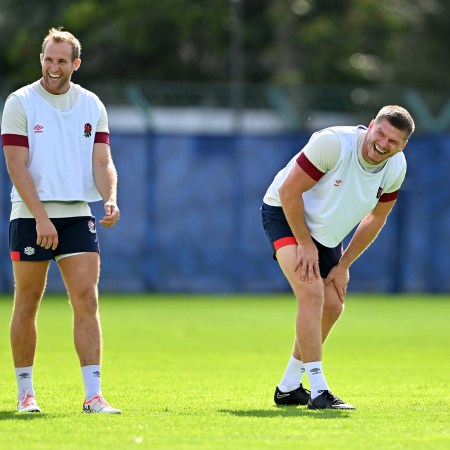In the early 1980s, a Swedish psychologist and sport scientist named Gunnar Borg developed a framework by which athletes could better attune themselves to their effort levels, named the Borg Rating of Perceived Exertion. Here’s how it breaks down:
- 6: No exertion at all
- 7-8: Extremely light
- 9-10: Very light
- 11-12: Light
- 13-14: Somewhat hard
- 15-16: Hard (heavy)
- 17-18: Very hard
- 19: Extremely hard
- 20: Maximal exertion
The scale runs somewhat bizarrely from 6 to 20 because Borg wanted the numbers to roughly correspond with heart rate figures. For example: an RPE of 12-14 should correlate to 120-140 beats per minute.
How to Improve Your “Fitness Range”
Hybrid athletes pump up their hearts and biceps in equal measureWhat Is Autoregulation?
In the decades since Borg first popularized the concept of “perceptometry,” exertion scales have proliferated across various sports and concentrations. They all fall under the umbrella of autoregulation, or the practice of monitoring one’s response to exercise…and adjusting accordingly.
In weightlifting, elite trainees may measure barbell speed with wearable technology or camera-based systems. Velocity-based training (VBT) can signal how much strength one has available to them on a given day — if your numbers are down, it probably isn’t a great day (or the safest idea) to be throwing the heavy stuff around.
In the endurance world, meanwhile, heart rate monitors help runners and cyclists see how hard they’re working in real-time. Runners tend to obsess over pace, but on certain days — due to poor sleep, life stress, air quality, anything — a 6:40 mile pace might prove more difficult than usual. It’ll present itself in the heart rate data. Instead of sweating the pace, runners can “autoregulate” down to a pace that accounts for the added perceived exertion.
Cyclists also have power meter metrics at their disposal. If they’re feeling strong and hitting their target power, for instance, they consider upping the intensity for a more challenging workout. Autoregulation is a sliding scale, which can be levied in either direction.
How to Autoregulate Your Exercise
As the tenets and toys of pro athletes are now available to the masses, you can put these ideas to good use in your own training. Get yourself a WHOOP, or get in the habit of filling out Strava’s “How did that feel?” section after a session on the roads. The more data you have, the easier it will be to keep track of when you’re ready to rip and when you should probably take a day to rest. This will help you avoid the pitfalls of “overtraining,” which negatively impact elites and laypeople, alike.
That said, autoregulation isn’t all objective metrics. It makes substantial use of subjective feelings, too. Embracing autoregulation means taking care of your body and taking pressure off your brain. It’s a worthy reminder that while exercise can at times feel punishing, it should never serve as self-punishment.
Exercise schema often suffer from delusions. We wake up, feel exhausted, shake it off and go run some stairs. No excuses, right? We only have one workout hour on Wednesdays. But it’s possible you didn’t get enough restorative deep sleep to warrant those high-intensity intervals. Perhaps your body was trying to tell you that it just needed some Tai Chi and stretching.
On the surface, autoregulation can seem limiting. But it’s actually an invitation to stock your quiver with more options. It rewards intuition, education and patience, while acknowledging that fitness journeys are hardly a sprint to race day, or a Labor Day weekend wedding — they play out over the full arc of a life.
Whether you’re looking to get into shape, or just get out of a funk, The Charge has got you covered. Sign up for our new wellness newsletter today.



















